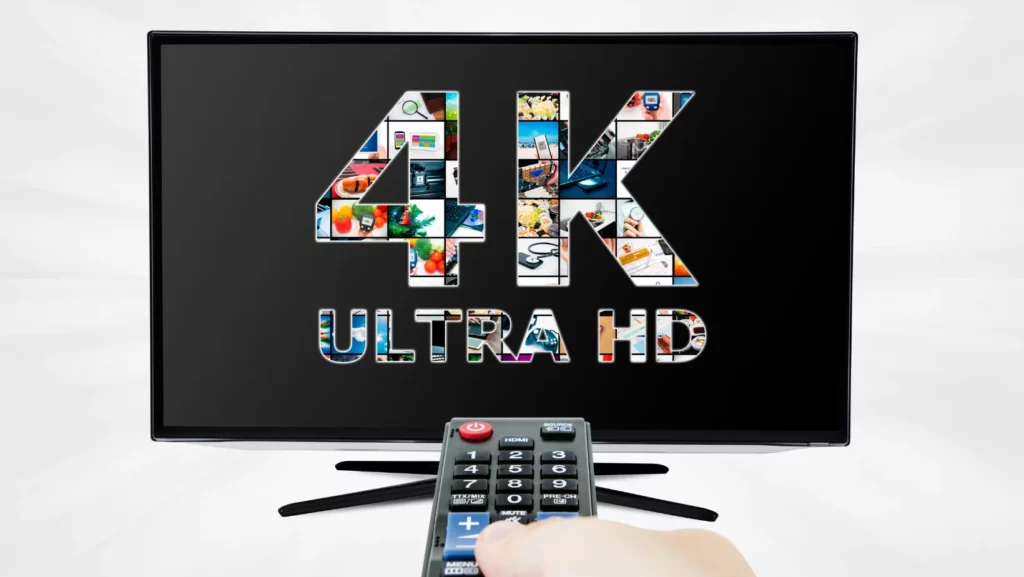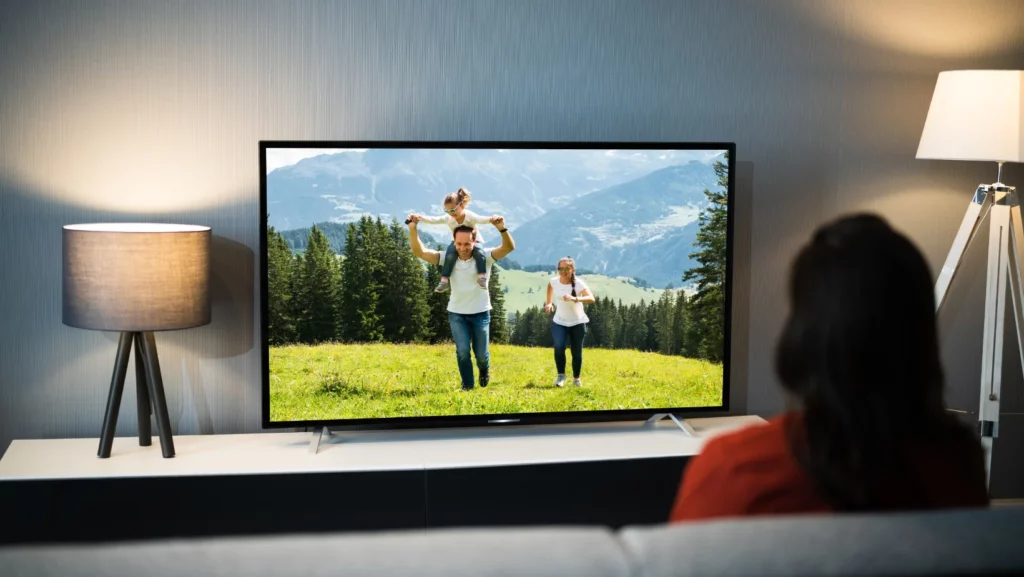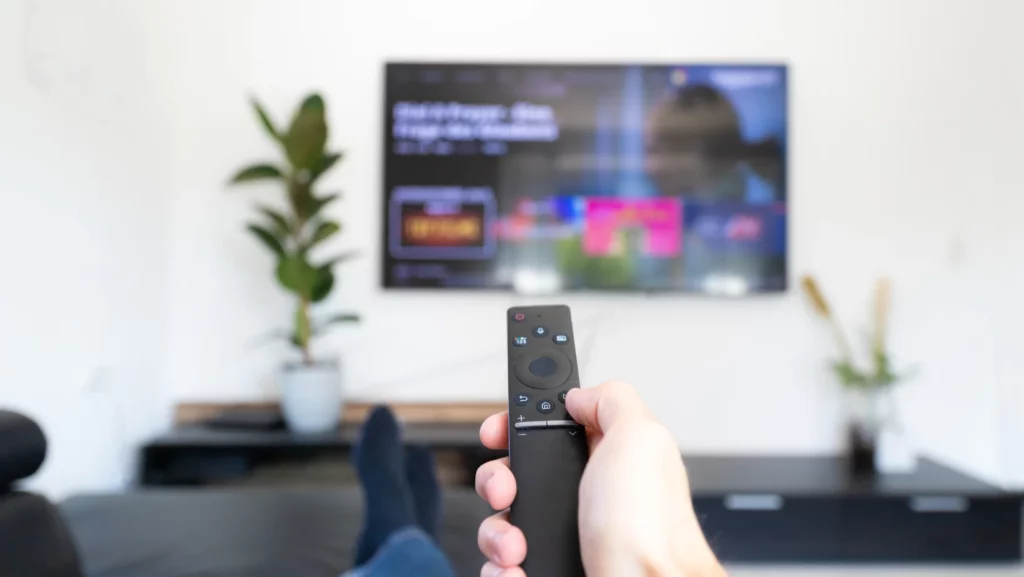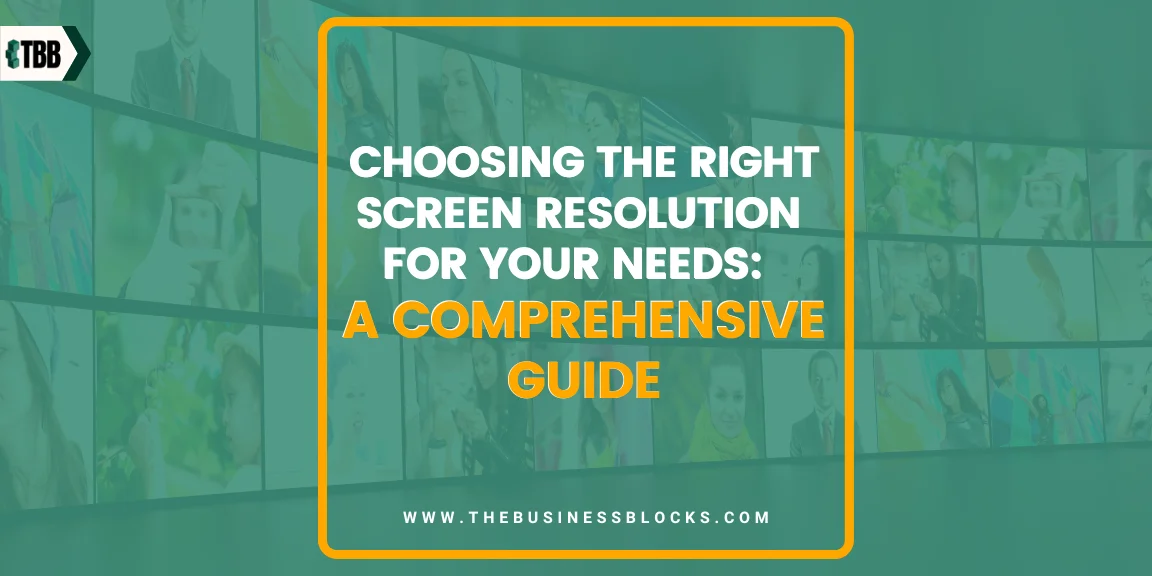In a world saturated with diverse display options, finding the ideal screen resolution tailored to your specific requirements can be a daunting task. This guide is crafted to simplify this process, offering clear insights and practical advice to help you navigate through the maze of resolutions.
Whether you’re a casual user, a creative professional, or a dedicated gamer, understanding the significance of screen resolution is pivotal for an enhanced digital experience. We’ll unravel the key factors influencing your choice, explore popular resolutions, and empower you with the knowledge needed to make a well-informed decision. Let’s embark on this insightful exploration together.
Did you know?
- 67.56% of the screen width is between 1360px and 1920px.
- The most common desktop screen resolution is 1920×1080, with a market share of 22.18%. This is followed by 1366×768 with 14.02% and 1536×864 with 10.03%.
Are you tired of pixelated screens or missing out on the breathtaking details in your favorite content?
Dive into a world where pixels matter and resolutions shape your visual landscape. Whether you’re a creative enthusiast, a tech-savvy gamer, or just looking to optimize your daily screen time, this guide is your compass to clarity.
Imagine unlocking the full potential of your display, witnessing vibrant colors, and experiencing crystal-clear visuals tailored to your unique needs. This guide will empower you to make informed choices, putting the power of optimal screen resolution right at your fingertips.
Keep reading and your perfect visual experience awaits – seize it now!
Introduction to Screen Resolutions

Screen resolution refers to the number of pixels, both horizontally and vertically, that a display can show. It is commonly expressed as the width x height in pixels. For example, a screen resolution of 1920×1080 means that the display has 1920 pixels in width and 1080 pixels in height.
The total number of pixels on a screen directly impacts the clarity and detail of the images and text displayed. Higher resolutions typically result in sharper and more detailed visuals, making it easier to discern fine details and enjoy a more immersive viewing experience.
Common screen resolutions include:
- HD (720p): 1280×720 pixels.
- Full HD (1080p): 1920×1080 pixels.
- Quad HD (1440p): 2560×1440 pixels.
- 4K Ultra HD (2160p): 3840×2160 pixels.
- 5K: 5120×2880 pixels.
- 6K: 6144×3160 pixels.
- 8K Ultra HD: 7680×4320 pixels.
At the heart of every display, from your smartphone to your desktop monitor, lies the concept of screen resolution. This crucial factor determines the number of pixels that make up the images and text you see on your screen. The higher the resolution, the more pixels are packed into the display, resulting in sharper and more detailed visuals.
Importance of Choosing the Right Resolution
The importance of choosing the right screen resolution cannot be overstated, as it directly influences the quality of your visual experience across various digital platforms. Here are several key reasons highlighting the significance of selecting an appropriate resolution:
Visual Clarity:
Optimal screen resolution ensures clear and sharp visuals, enhancing the overall clarity of images, text, and graphics on your display. This is crucial for tasks such as reading, graphic design, and watching high-definition content.
Detail and Precision:
Higher resolutions provide more pixels, allowing for finer details and increased precision in visual elements. This is particularly beneficial for activities like photo and video editing, where accurate representation is essential.
Immersive Gaming:
Gamers often prioritize higher resolutions for a more immersive gaming experience. A greater number of pixels means more detailed game environments, textures, and character models, contributing to a more lifelike and engaging gameplay.
Multitasking Efficiency:
With the right resolution, you can effectively utilize screen real estate for multitasking. Higher resolutions enable you to have multiple windows open simultaneously without sacrificing clarity, enhancing productivity in tasks that involve working with multiple applications.
Compatibility with Content:
Choosing a resolution that aligns with the content you consume is important. For example, streaming 4K videos on a 4K display ensures that you fully appreciate the high-quality visuals provided by the content creators.
User Comfort:
A well-matched screen resolution contributes to user comfort. Straining to read small text or struggling with pixelated images due to an incompatible resolution can lead to eye fatigue and discomfort over time.
Future-Proofing:
Selecting a resolution that meets current standards while considering potential future advancements helps future-proof your display. This is especially relevant as technologies evolve, and higher resolutions become more prevalent in content creation and consumption.
Device Performance:
Different devices have optimal resolutions based on their specifications. Selecting a resolution that aligns with your device’s capabilities ensures optimal performance and responsiveness.
The importance of choosing the right screen resolution lies in the enhancement of visual quality, the precision of details, and the overall improvement of the digital experience across various applications and activities. Whether you’re working, gaming, or enjoying multimedia content, the right resolution can significantly elevate your interaction with digital media.
Common Screen Resolutions Explained

Understanding these resolutions is not just about pixels; it’s about unlocking a spectrum of clarity that transforms how we interact with the digital world.
HD (720p) and Full HD (1080p):
- HD (720p): With a resolution of 1280×720 pixels, HD provides a step up from standard definition and is commonly found in smaller displays, such as budget-friendly TVs and entry-level monitors. While it may not offer the highest level of detail, it still provides a crisp viewing experience.
- Full HD (1080p): Full HD, with a resolution of 1920×1080 pixels, is the standard for most modern displays, from computer monitors to television screens. It delivers a sharper and more detailed image compared to HD and is widely used for various applications, including gaming, streaming, and general computing.
Quad HD (1440p):
- With a resolution of 2560×1440 pixels, Quad HD (QHD) offers a significant increase in pixel density compared to Full HD. This resolution is commonly found in mid-range to high-end monitors and provides a noticeable improvement in detail, making it popular among gamers, content creators, and professionals who require enhanced visual clarity.
4K Ultra HD (2160p):
- 4K Ultra HD, also known as 2160p, boasts a resolution of 3840×2160 pixels, providing four times the pixel density of Full HD. This resolution is widely used in larger displays, including high-end monitors, TVs, and content-creation tools. It offers stunning detail and is particularly favored by professionals for tasks such as video editing and graphic design.
Beyond 4K: 5K, 6K, and 8K:
- 5K (5120×2880): 5K resolution further elevates the pixel count, offering enhanced clarity and detail. It is often utilized in professional-grade monitors for tasks that demand the highest level of precision, such as detailed graphics work and video editing.
- 6K (6144×3160): Primarily found in advanced video production and editing environments, 6K resolution is an intermediary step between 4K and 8K, catering to professionals who require extremely high resolution for their work.
- 8K Ultra HD (7680×4320): Representing the pinnacle of current display technology, 8K Ultra HD provides an unparalleled level of detail. While not as widespread as lower resolutions, 8K is becoming more prevalent in high-end TVs and monitors, pushing the boundaries of visual fidelity for applications such as cinema-grade video editing and immersive gaming experiences.
Applications and Considerations
In the dynamic realm of screen resolutions, understanding their applications is key to optimizing your digital experience.
Let’s explore how different resolutions cater to specific needs and considerations across various domains:
Gaming and Screen Resolutions:
Gaming enthusiasts know that the right screen resolution can significantly impact the immersive quality of gameplay. Higher resolutions, such as 1440p (Quad HD) and 4K, not only enhance visual clarity but also bring out the intricate details of in-game environments and characters. Considerations for refresh rates and response times also play a crucial role in delivering a smooth gaming experience.
Graphic Design and Visual Arts:
For graphic designers and visual artists, precision and detail are paramount. Resolutions like 4K and beyond provide an expansive canvas for intricate designs, enabling professionals to work with fine details seamlessly. Color accuracy and wide color gamuts, often associated with high-resolution monitors, contribute to creating visually stunning and accurate digital art.
Multimedia Consumption:
When it comes to watching movies, streaming content, or enjoying high-quality visuals, the screen resolution becomes a pivotal factor. Higher resolutions, including Full HD (1080p) and 4K, deliver a cinematic experience with vibrant colors and sharp details. Additionally, considerations such as HDR (High Dynamic Range) support further enhance the multimedia consumption experience.
Productivity and Multitasking:
Professionals and multitaskers benefit from displays that accommodate efficient workflow and multitasking capabilities. While higher resolutions like 4K provide ample screen real estate for multiple windows and applications, considerations for display size and scaling become crucial to maintain legibility and usability. Striking the right balance between resolution and screen size is key for productivity.
Understanding the specific demands of each application allows users to tailor their screen resolutions to match their preferences and work requirements. Whether you’re immersed in gaming, unleashing creativity in graphic design, indulging in multimedia experiences, or optimizing productivity, choosing the right resolution ensures an enhanced and tailored digital interaction.
Factors Influencing Your Choice

In the quest to choose the perfect screen resolution, several crucial factors come into play, shaping your visual experience. Let’s delve into the key influencers that should guide your decision-making process:
Display Size and Aspect Ratio:
The relationship between screen resolution and display size is pivotal. A resolution that works well on a smaller screen might not deliver the same visual impact on a larger display. Additionally, considering the aspect ratio (the ratio of width to height) is essential, as different resolutions may have varying aspect ratios, influencing how content is displayed.
Personal Preferences and Use Cases:
Your unique needs and preferences play a significant role in the choice of screen resolution. Are you a gamer seeking immersive graphics? A content creator focusing on detail and precision? Tailoring your choice to match your specific use cases ensures a personalized and satisfying visual experience. Consider factors like the type of content you interact with regularly and the tasks you perform on your device.
Budget Considerations:
While higher resolutions often offer superior visual quality, they may come with a higher price tag. Balancing your desired resolution with budget considerations is crucial. Fortunately, advancements in technology have made mid-range resolutions, such as Full HD (1080p), more accessible without compromising on quality. Assessing your budget constraints ensures that you make a practical and cost-effective decision without sacrificing too much on visual fidelity.
By carefully weighing these factors, you can make an informed decision that aligns with your preferences, device specifications, and financial considerations. The goal is to strike a harmonious balance between visual quality, usability, and affordability, ensuring that your chosen screen resolution enhances rather than hinders your overall digital experience.
Practical Tips for Choosing the Right Resolution
Choosing the right screen resolution is a pivotal decision that directly influences your digital experience. To guide you through this process, here are practical tips to help you make an informed and satisfying choice:
- Identify Your Primary Use: Begin by identifying the primary purpose of your display. Whether it’s gaming, content creation, work productivity, or general web browsing, understanding your main use case will guide you toward resolutions that cater to specific needs.
- Consider Detail Requirements: Evaluate the level of detail your tasks demand. If you’re into graphic design, video editing, or any activity that relies on precision, higher resolutions like Quad HD (1440p) or 4K Ultra HD might be beneficial for a more detailed and immersive experience.
- Evaluate Display Size: Take into account the physical size of your display. Higher resolutions on smaller screens may result in elements appearing too small, affecting readability and usability. Conversely, lower resolutions on larger screens may lead to a lack of detail. Striking a balance between screen size and resolution is key.
- Check Device Compatibility: Ensure that your device supports the chosen resolution. Different devices have different capabilities, so verify that your monitor, TV, or laptop can handle the resolution you’re considering. Compatibility issues could impact performance and visual quality.
- Assess Graphics Processing Unit (GPU): High resolutions, especially in gaming or content creation, may require a capable graphics card. Check if your GPU can handle the chosen resolution to ensure smooth performance and an optimal visual experience.
- Verify Cable and Port Compatibility: Confirm that your cables and ports are compatible with the chosen resolution. For example, 4K displays often require HDMI 2.0 or DisplayPort 1.2 for proper transmission of high-resolution content. Ensure your hardware supports the necessary connections.
- Consider Budget Constraints: Balance your desired resolution with budget considerations. While higher resolutions offer superior visual quality, mid-range resolutions like Full HD (1080p) can provide a satisfactory experience without breaking the bank.
- Explore User Reviews and Recommendations: Research user reviews and seek recommendations from reliable sources. Real-world experiences can provide valuable insights into how a particular resolution performs in various scenarios and use cases.
By incorporating these practical tips into your decision-making process, you’ll be better equipped to choose a screen resolution that not only meets your specific needs but also enhances your overall digital interaction.
Troubleshooting 10 Common Issues and Solutions

Troubleshooting common issues related to screen resolutions is essential for maintaining an optimal viewing experience. Here are some prevalent problems users may encounter and practical solutions to address them:
- Blurry or Pixelated Display
Solution: Adjust the screen resolution to match the native resolution of your display. Using a non-native resolution can result in a less-than-optimal visual experience. Additionally, check for graphics driver updates, as outdated drivers may contribute to display issues.
- Incorrect Screen Orientation
Solution: Access your display settings and ensure the correct screen orientation (landscape or portrait) is selected. If the issue persists, update your graphics drivers and restart your computer to apply the changes.
- Flickering or Screen Tearing
Solution: Adjust the refresh rate of your display to a setting supported by both your monitor and graphics card. Enabling V-Sync in games or applications can also help reduce screen tearing. If problems persist, update your graphics drivers.
- No Signal or Blank Screen
Solution: Check cable connections between your device and monitor. If using HDMI or DisplayPort, ensure the cables are securely plugged in. Test the monitor with another device to rule out hardware issues. If the problem persists, try connecting your device to another display to isolate the issue.
- Inconsistent Colors or Artifacts
Solution: Update your graphics drivers to the latest version. Adjust color settings in your display settings to ensure accurate color representation. If artifacts persist, it could be indicative of a failing graphics card, and professional assistance may be necessary.
- Undetected External Monitor
Solution: Ensure the cable connecting your external monitor is secure. Check if your computer is set to extend or duplicate the display in the graphics settings. Update graphics drivers and restart your computer. If using a docking station, verify its compatibility and functionality.
- Scaling Issues in High-Resolution Displays
Solution: Adjust the scaling settings in your display preferences to ensure that text and icons are appropriately sized. This is particularly important for high-resolution displays on smaller screens to maintain readability and usability.
- Limited Resolution Options
Solution: Update your graphics drivers to the latest version. If using an integrated graphics card, check the manufacturer’s website for driver updates. Limited resolution options may occur if the drivers are outdated or incompatible.
- Aspect Ratio Mismatch
Solution: Select a resolution with the correct aspect ratio for your display. If the aspect ratio is off, images may appear stretched or distorted. Verify the native aspect ratio of your monitor and choose resolutions accordingly.
- Artifacting or Screen Freezing During Gaming
Solution: Ensure your graphics card drivers are up to date. Adjust in-game settings to match the capabilities of your hardware. Monitor temperatures, as overheating can lead to performance issues. If problems persist, consider adjusting graphical settings or upgrading your graphics card.
For persistent issues or those beyond the scope of these solutions, seeking assistance from technical support or professional services may be necessary. Regularly updating graphics drivers and staying informed about device compatibility can go a long way in preventing and resolving common display issues.
Frequently Asked Questions about Choosing the Right Screen Resolution for Your Needs: A Comprehensive Guide
Q: What is the significance of screen resolution, and how does it impact my overall digital experience?
A: Screen resolution determines the number of pixels displayed on your screen, directly influencing image clarity and detail. The right resolution enhances your visual experience, making a significant difference in tasks like gaming, graphic design, and multimedia consumption.
Q: How do I know which screen resolution is suitable for my specific needs and preferences?
A: Consider your primary use case (e.g., gaming, content creation, productivity) and the level of detail required. Tailor your choice based on your unique preferences, striking a balance between resolution, display size, and budget constraints.
Q: Can I use a higher resolution than my device’s native resolution, and what are the potential consequences?
A: While it’s possible, using a resolution higher than your device’s native resolution may result in a less-than-optimal display, causing blurriness or distortion. It’s recommended to stick to the native resolution for the best visual experience.
Final Thoughts
Choosing the right screen resolution isn’t just about numbers; it’s about crafting an experience tailored to your unique needs and preferences. Remember that the perfect resolution is the one that enhances your everyday activities, be it gaming, designing, or simply enjoying content. Keep in mind the balance between detail, usability, and budget constraints.
So, whether you’re immersing yourself in the captivating realms of high-definition gaming or fine-tuning the nuances of graphic design, your screen resolution is your visual companion in this digital journey. May your pixels be sharp, your visuals be vibrant, and your digital experiences be nothing short of extraordinary.

